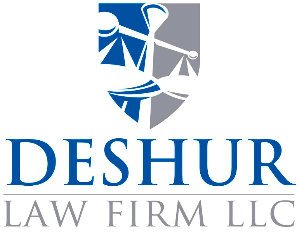Chapter 13
Bankruptcy
Chapter 13 Bankruptcy is a debt repayment plan that protects the client from collection during the plan and discharges (forgives) any unpaid balance of dischargeable debts at the end of the plan. Any individual, even if self-employed or operating an unincorporated business, is eligible for chapter 13 relief as long as the individual's combined total secured and unsecured debts are less than $2,750,000 as of the date of filing for bankruptcy relief. 11 U.S.C. § 109(e).
When a client files Bankruptcy under Chapter 13, his debts are consolidated and he proposes a repayment plan to repay all or a portion of his debts over a 3 to 5 year period. Payments under the plan are made to a court-appointed trustee who disburses payments to creditors. In most cases, the amount of the client Chapter 13 payment is the amount he has left over each month after paying all of his allowable living expenses. While the Chapter 13 plan is in effect, creditors cannot contact the debtor, sue him, garnish his wages or repossess or foreclose on any of his property.
Chapter 13 allows the client up to 5 years to catch up on delinquent mortgage and vehicle payments. Unsecured mortgages can be "stripped off" altogether if there is no equity in the property to support the mortgage.
In many cases, Chapter 13 will reduce the principal balance and interest rate on vehicles and other collateral that the debtor wants to keep (other than his primary residence). In many cases, vehicle payments can be reduced by as much as 50%.
Even if the client has filed a Chapter 7 Bankruptcy within the past 8 years or has non-exempt assets he can file a Chapter 13 Bankruptcy.
A Chapter 13 Bankruptcy proceeding is commenced by filing Official Bankruptcy Forms in the U.S. Bankruptcy Court. These forms require a client to list all of his assets and debts, along with some recent financial information. This is the most important and time-consuming part of a Bankruptcy filing. A proposed Chapter 13 repayment plan is also required to be filed.
It is important that every creditor is listed on the Bankruptcy forms with an accurate mailing address. All debts must be listed, even if a particular debt is non-dischargeable.
The Bankruptcy forms are signed by the client under penalty of perjury, then filed with the Bankruptcy court clerk in the district in which the debtor resides, or has resided for the greater part of the last 180 days.
To file an individual or joint Chapter 13 Bankruptcy, a court filing fee in the amount of $313 must be paid to the U.S. Bankruptcy Court at the time of filing. A Chapter 13 Bankruptcy is effective immediately upon filing and an "automatic stay" immediately stops all collection activity, including foreclosure, repossession, garnishment, lawsuits, creditor contact, etc.
The Bankruptcy court will mail notice of the Bankruptcy filing and automatic stay to each of the creditors listed on the debtors Bankruptcy forms. Any creditor who violates the automatic stay by attempting to collect a debt from the client may be held in contempt of court and punished by fine or imprisonment.
About 4-6 weeks after the Bankruptcy filing date, the client must attend a "341 meeting" (also known as a "meeting of creditors"). At the 341 meeting, the trustee will ask the client a few questions regarding his financial situation. The meeting in a typical consumer case lasts about 20 minutes and creditors virtually never attend the meeting.
Upon completion of all payments provided for in the Chapter 13 plan, the client receives a final discharge of any remaining balance due on all dischargeable debts.
Chapter 13 vs. Chapter 7
One purpose of a Chapter 13, as opposed to a Chapter 7, is to enable a client to retain certain assets (for example, your home) that might otherwise be liquidated by a Chapter 7 Trustee. It also provides an alternative to Chapter 7 when you have too much "disposable income" (your net monthly income exceeds your net monthly expenses by too much) and usually yields much lower monthly payments than you were previously paying.
What are the benefits of Chapter 13?
Chapter 13 protects individuals and buisnesses from the collection efforts of creditors, permits individuals and buisnesses to keep their real estate and personal property, and provides individuals and buisnesses the opportunity to repay their debts through reduced payments.
You are also able to discharge debts in a Chapter 13 that would be nondischargeable under other Chapters, such as parking tickets and tollway violations.
Additionally, you may be able to get rid of junior liens on your real property. If the fair market value of your property is less than the total amount owed on the 1st mortgage, you can eliminate the security interest to any junior lienholders and treat them as general unsecured creditors in your plan (thereby being able to possibly pay them less than 100%).
